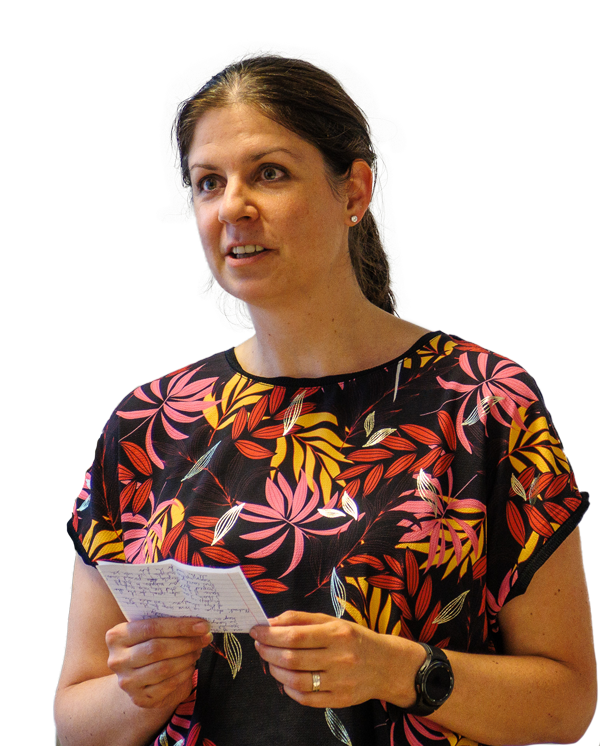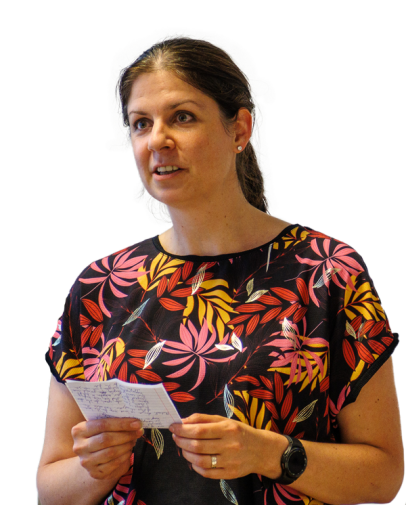

protein source
of the future
The industry continues to innovate. When new opportunities present themselves, they are explored and so new trends are always being looked at. One trend we are increasingly seeing is the use of insects as a source of protein. Is this the future?

Insects offer several health benefits for animals, which are still being researched. For instance, the black soldier fly might have antimicrobial effects on pigs.
Currently, soya is often used as a protein source for animal feed. But there are other protein sources to consider, such as insects. Ann Espeel has been a trainer at Aeres Training Centre International for four years. She teaches international poultry classes and develops educational materials. She has students from abroad under her wing, but also gives trainings in countries like India, Uganda, Kenya and Tunisia. We ask her about the possibilities for insects as a protein source of the future.


TMT Insecten Somalie 2022

So is this the solution for the future? Who knows, at least it has a high chance of success. Ann is now also engaged in writing courses and training materials on the basics of insect farming. After following such a course, one should be able to start breeding insects. Like all other ATCI courses, they will be practical and follow the ‘learning by doing principle’.



”
I do believe there is a future here. How and where exactly remains to be seen. But that there is plenty of development around this topic is certain.
”
According to Wageningen University and Research, insects could potentially play a key role in making the food chain circular.
”
Insects are already being used as a source of protein for chickens, pigs, fish and shrimps.
The world increasingly demands efficient and sustainable solutions. This could be one of them. “This can be produced hyper-locally and does not have to be imported, like soya, for example. It could also be a really good substitute for fish oil. The demand for fish oil is increasing, but the catch is not. So insects can help in this. It is a very efficient source of protein. They can be eaten whole, require little feed and are easy to grow,” Ann explains. “Another advantage, which needs further investigation, is that they can possibly be grown on residual streams, such as manure. In the Netherlands, this is not allowed because there is a chance that it will return in the human foodchain but rules may be different in other countries.”
Ann explains that this solution is ideally suited to countries with warmer and more humid climates. “Those are the ideal conditions for insects. If you have to add heat and humidity, the costs, especially with high energy prices, can be significant. Therefore, this will not be an attractive solution everywhere.”
There are several sources of protein that are used in animal feed. Think about soya, but fish oil is also a common source. Today we can also add insects to this list. Ann Espeel elaborates: “Insects appear to be a high-quality source of protein. They are also fairly easy to add to feed. They usually have a high protein content and contain many important amino acids. Depending on which insect you choose, deficiencies in lysine and methionine can occur, but you can monitor and balance that.”
Research into the use of insects for animal feed is being conducted at Wageningen University (WUR) and elsewhere. “In Barneveld, we already work with the black soldier fly and the house fly. Cockroach is also recommended by WUR (Wageningen University & Research) because it is particularly rich in protein. What is really beneficial and what the practical and economic implications are is not yet entirely clear.”
And what does it look like, feeding these insects? “In some countries, like in Kenya, the chickens just eat the larvae of the insects. The animals there are fed manually, so it is easy to give them that way. In the Netherlands, it works differently. But you could think of insect oil like we often add fish oil to cattle feed now.”

The industry continues to innovate. When new opportunities present themselves, they are explored and so new trends are always being looked at. One trend we are increasingly seeing is the use of insects as a source of protein. Is this the future?

protein source
of the future


”
I do believe there is a future here. How and where exactly remains to be seen. But that there is plenty of development around this topic is certain.

So is this the solution for the future? Who knows, at least it has a high chance of success. Ann is now also engaged in writing courses and training materials on the basics of insect farming. After following such a course, one should be able to start breeding insects. Like all other ATCI courses, they will be practical and follow the ‘learning by doing principle’.
”
According to Wageningen University and Research, insects could potentially play a key role in making the food chain circular.
”
Insects are already being used as a source of protein for chickens, pigs, fish and shrimps.
The world increasingly demands efficient and sustainable solutions. This could be one of them. “This can be produced hyper-locally and does not have to be imported, like soya, for example. It could also be a really good substitute for fish oil. The demand for fish oil is increasing, but the catch is not. So insects can help in this. It is a very efficient source of protein. They can be eaten whole, require little feed and are easy to grow,” Ann explains. “Another advantage, which needs further investigation, is that they can possibly be grown on residual streams, such as manure. In the Netherlands, this is not allowed because there is a chance that it will return in the human foodchain but rules may be different in other countries.”
Ann explains that this solution is ideally suited to countries with warmer and more humid climates. “Those are the ideal conditions for insects. If you have to add heat and humidity, the costs, especially with high energy prices, can be significant. Therefore, this will not be an attractive solution everywhere.”
There are several sources of protein that are used in animal feed. Think about soya, but fish oil is also a common source. Today we can also add insects to this list. Ann Espeel elaborates: “Insects appear to be a high-quality source of protein. They are also fairly easy to add to feed. They usually have a high protein content and contain many important amino acids. Depending on which insect you choose, deficiencies in lysine and methionine can occur, but you can monitor and balance that.”
Research into the use of insects for animal feed is being conducted at Wageningen University (WUR) and elsewhere. “In Barneveld, we already work with the black soldier fly and the house fly. Cockroach is also recommended by WUR (Wageningen University & Research) because it is particularly rich in protein. What is really beneficial and what the practical and economic implications are is not yet entirely clear.”
And what does it look like, feeding these insects? “In some countries, like in Kenya, the chickens just eat the larvae of the insects. The animals there are fed manually, so it is easy to give them that way. In the Netherlands, it works differently. But you could think of insect oil like we often add fish oil to cattle feed now.”
Insects offer several health benefits for animals, which are still being researched. For instance, the black soldier fly might have antimicrobial effects on pigs.
Currently, soya is often used as a protein source for animal feed. But there are other protein sources to consider, such as insects. Ann Espeel has been a trainer at Aeres Training Centre International for four years. She teaches international poultry classes and develops educational materials. She has students from abroad under her wing, but also gives trainings in countries like India, Uganda, Kenya and Tunisia. We ask her about the possibilities for insects as a protein source of the future.

